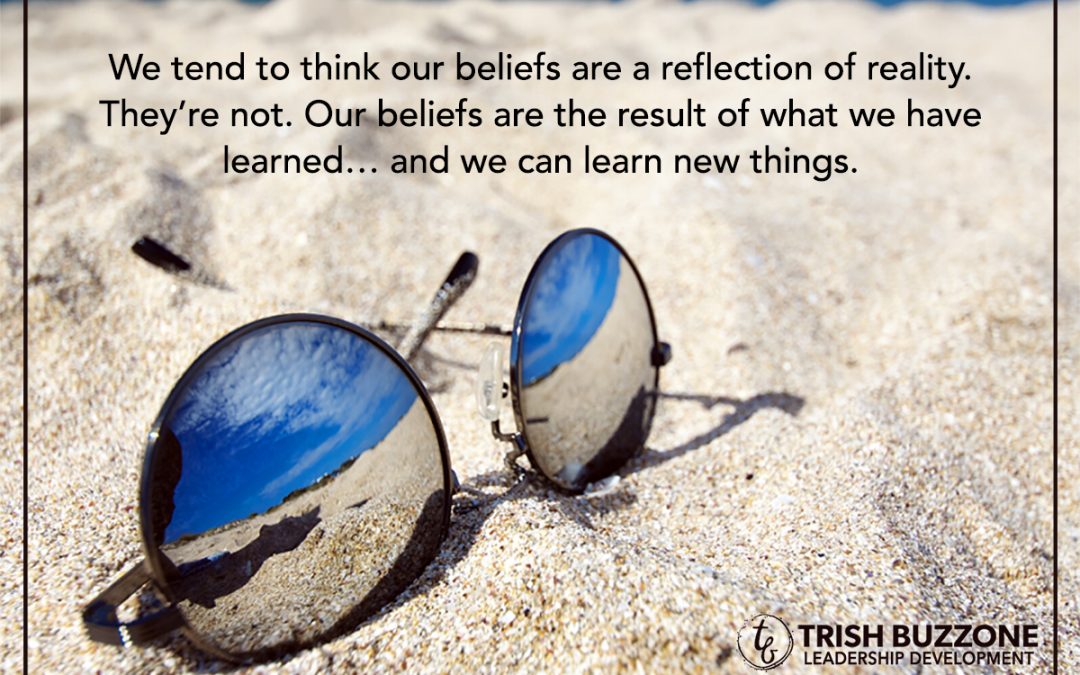Leaders do not need to be told what to do. If they can see their situation clearly and understand their options fully, most of the time they will make the best call. Helping someone see clearly and understand fully is a process, and it may not always be easy, but it’s always worth it. When I’m working with a client, and I see they’re so close, it’s sometimes tempting to crack and just give them the answer. And that’s most often a bad idea.
As coaches, when we give someone a solution, we’re not basing that advice on their specific situation. We’re basing it on something we’ve seen work before for someone else. Similar advice might be a great idea in this situation too. However, it may not be the best solution for that leader; because, no matter how similar something might look on the surface, every scenario is different … and it’s in the process of digging deeper to reveal that nuance where we find the difference between a good answer and the best answer.
The Power of Good Questions
How do we reveal that nuance and find the best answer? We begin with asking good questions. This is a process, and it requires engagement from both sides. If the coach and the client are not both on board, the process that creates the best answers breaks down.
One of the easiest ways to get stuck is to assume what’s coming next. As leaders, it’s natural to want to know where something is headed. We’re goal-oriented people who keep the end in mind. Those are good things. However, in this kind of conversation, trying to figure out where someone is going becomes a distraction. If the coach and the client can commit to engaging in a constructive back and forth, letting the conversation go wherever it might lead, we arrive at breakthrough together.
You may be familiar with this sort of conversational style, sometimes called Socratic dialogue. By taking this approach – and by resisting the urge to just tell people what we think they should do – leaders see for themselves where they’re stuck. Once we see what’s holding us back, we have a choice to make. Will I continue to be stuck, or will I shift my thinking in a way that leads to freedom? Time and again, I’ve seen leaders choose to make that shift, creating breakthrough for them and inspiration for their team.
When I’m working with a leader, the questions don’t stop at that first level of breakthrough. If we’re fully engaged in the process together, we create a series of questions that lead to even better questions leading to ongoing breakthrough and continual growth.
How Questions Guide the Process
Another important aspect of my approach to coaching is the understanding of process. Leadership is not about “getting there,” it’s about continual growth. The moment you decide “I’ve arrived,” you put a lid on your potential, as well as the level of success your team can achieve.
This happens in coaching, too, when we stop asking questions and start trying to offer solutions. At that point, we’ve stopped really listening, and that shuts the exchange down cold. That’s easy to do, especially when we’re focused on what someone is saying and not who they’re being. That’s a vital distinction. When we focus on what someone is saying, we spend a lot of our time trying to interpret what we think they “really mean.” However, when we focus on who that person is being—the why part of what they’re saying—we catch the deeper meaning without stirring in our own assumptions.
To learn more about my coaching, click here.
Asking questions, rather than making statements or offering solutions, allows the coach and the client to connect on a deeper level. This, for me, leads to more effective coaching. For my clients, this reveals where they’re stuck and how they may break free.
Most important, they come to those answers on their own … and that brings us right back to the main point. Leaders don’t need to be told what to do. We need to be guided around or through the things that get us stuck, so we see the solutions for ourselves.
How have good questions helped you find the answers that led to success in your life or work? Share your thoughts in the comments below.

Maintaining Focus and Building Momentum in a Time of Crisis
Turn on the news during this pandemic, and examples of leadership, good and bad, are there for all the world to see. From local officials trying to balance the health of their constituents while protecting the future of their community; to military officers at odds...

Leading Through a Crisis: Chaos, Clear Thinking, and Compassion Fatigue
Leading Through a Crisis: Chaos, Clear Thinking, and Compassion Fatigue How to protect our minds when crisis threatens to replace what we know with what we see Two months ago, none of us knew 2020 would be the year of COVID-19. Yet here we are. Life in the...

Let’s Work Together to Slow the Spread
The world has changed a lot over the past couple of weeks. And more changes are coming every day. Like you, I want to have good information, and I want to know how I can help. Watching this video helped me understand why governments around the world, local...

The Power of Connection
There’s a popular maxim in business that argues “It’s not what you know, it’s who you know.” While I believe both what you know and who you know are important, we all understand the point of that truism: When it comes to success in any endeavor,...
What transformational leaders say
In our last blog, we talked about how what transformational leaders see gives them a vision that creates real change, in people and in industries. In this article, we’re going to take a deeper look at how those leaders communicate their vision in a way...
What transformational leaders see
When we’re considering a vision or looking ahead at a goal, how can we know if it will be “good,” or it will be “transformational?” What makes the difference? What pushes us over the tipping point from being effective managers to becoming inspiring...
How leading at every level turns customers into fans
Recently, I stopped by a new restaurant in town. It was a fast casual joint, famous for great burgers and delicious shakes, so we decided to give it a try. We arrived anticipating a delicious meal and a tasty treat, however, we did not expect a shining...
How transformational is your vision? Take the quiz!
If we want to accomplish things we have never done, to go from where we are to where we want to be, we must expand our beliefs about our abilities, our focus, and our efforts. We must transform our vision and shift our thinking in a way that makes it all...
Shaun White: a Gold Medal Lesson in What Separates Failure and Success
For this article, I invited my friend and colleague, E. Adam Porter, to share his thoughts on leadership after this week’s remarkable Winter Olympic competition. Even if you knew next to nothing about champion snowboarder, Shaun White, you knew there was...
Building a Leadership Culture
In previous blogs, especially here, here and here, we’ve talked about what a leadership culture looks like on a team. An active leadership culture is not only an environment in which leadership is embraced and trusted, it is an environment in which the...








0 Comments